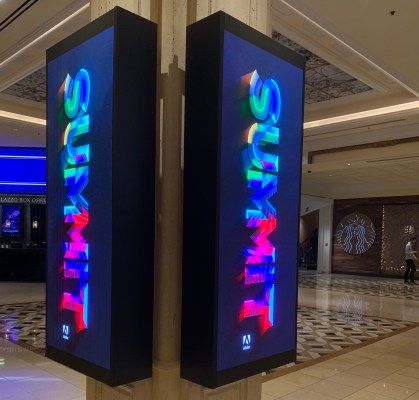Adobe was scheduled to hold its annual conference in Las Vegas two weeks ago, but the coronavirus pandemic forced the company to make alternate plans. In less than a month, its events team shifted venues for the massive conference, not once, but twice as the severity of the situation became clear.
This year didn’t just involve Adobe Summit itself. To make things more interesting, it was also hosting Magento Imagine as a separate conference within a conference at the same time. (Adobe bought Magento in 2018 for $1.6 billion.)
Originally, Adobe had more than 500 sessions planned across four venues on the Las Vegas Strip, with more than 23,000 attendees expected. Combining all of the sponsors, partners and Adobe personnel, it involved more than 40,000 hotel rooms.
Once it became clear that such a large event couldn’t happen, the company reimagined the conference as a fully digital experience.
Plan A
VP of Experience Marketing Alex Amado is in charge of planning Adobe Summit, a tall task under normal circumstances.
“Planning Summit is a year-round endeavor,” he said. “Literally within weeks of finishing one of those Las Vegas events we are starting on the next one, and some of the work actually is on an 18 or 24-month cycle because we have those long-term hotel contracts and all of that stuff.
“For the last 12 months, basically, we had people who were working on what we now call Plan A — and we didn’t know that we needed a Plan B and Plan C — and the original event was going to be our biggest yet.”
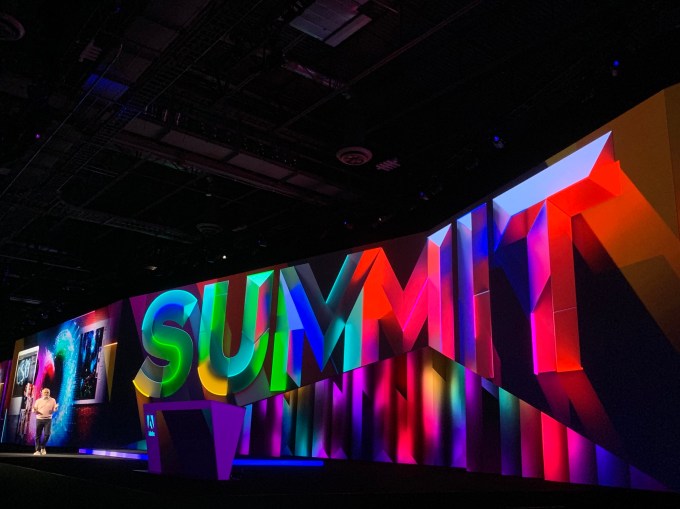
2019 Adobe Summit stage in Las Vegas. Photo: Ron Miller/TechCrunch
After the team began to wonder in January if the virus would force them to change how they deliver the conference, they started building contingency plans in earnest, Amado said. “As we got into February, things started looking a little scarier, and it very quickly escalated to the point where we were talking really seriously about Plan B.”
Plan B
When it was clear that Vegas couldn’t happen, they started envisioning an alternative event with a live audience closer to their San Jose headquarters. This one would be recorded in front of attendees and then presented on the website for those who couldn’t be there in person.
Amado said they still wanted to put on a visually stunning spectacle that has been the hallmark of the Las Vegas events, just with a smaller audience — something they would soon learn still wasn’t an acceptable compromise.
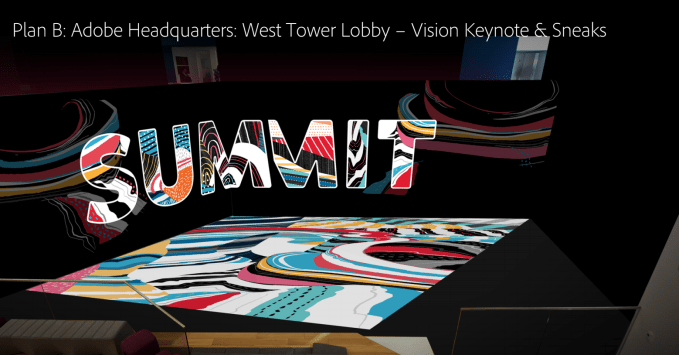
Adobe Summit – Plan B vision (Photo: Adobe)
“We had all the equipment from Vegas that we had already ordered, all of those LED screens, and we were going to have that stuff shipped to San Jose. We had a new design for this half-cube made of LED screens to present with angled video screen walls and a video-screen floor that the presenters would be on so we could do these really dramatic 360-degree graphics,” he explained.
Production design called for a crew of 180 workers to install the LED setup along with a camera on a crane that would allow them to present a visually impressive setting that retained all of the special guests and live demos planned for Las Vegas.
But two weeks later, organizers learned that this also would be unfeasible; the pandemic was escalating and Santa Clara County had enacted a ban on gatherings of more than 30 people. This forced Adobe to pivot yet again, which was when Plan C started to come together.
Plan C
Instead of glitz and glamour and fancy graphics over five days, event organizers decided to record presentations in the homes of Adobe executives. There would be no cranes, no broadcast-quality cameras and no graphics or LED screens — and it would be a one-day event instead of five.
“This became a really different exercise,” said Amado. “It involved shipping webcams and lights. It meant rehearsing over [video-conferencing vendor] BlueJeans so we could coach people on their presentations, then having everybody self-record. And then doing a lot of editing [with very little leeway in terms of timing],” he said.
For optimal production quality, they decided to record rather than go live. Amado’s team wanted to be able to edit out stumbles or dogs barking in the background and other familiar sounds of home. They also wanted to be able to swap in demos as they would live on stage, which editing made possible.
“There was also logistical challenges of wanting to cut in demos and kind of cut back and forth between presenters, which we did in a very short period in post-production. So we did touch up those files and add in all the transitions and stuff,” Amado explained.
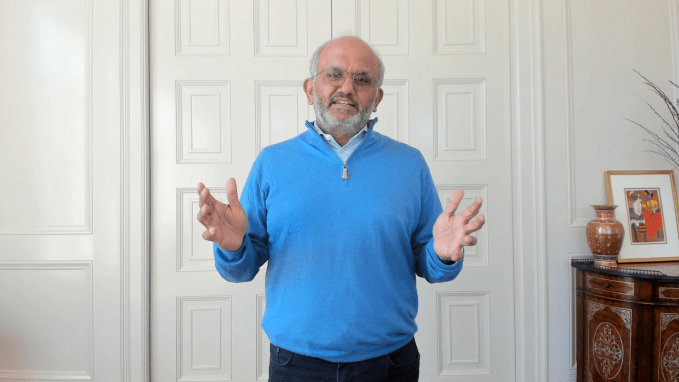
Shantanu Narayen welcomes participants to the online version of Adobe Summit 2020 (Photo: Adobe)
At that point they let attendees know that the event was going online, and Adobe had to actually manually cancel each ticket order, a huge undertaking for 23,000 paying participants. The booking service Adobe used had no means to bulk cancel because no client had ever needed such a tool.
They scheduled the Plan C event for 8:30 a.m. Pacific time so attendees in Europe could participate. But that added yet another layer of complexity because they needed to translate content into German and French, the primary languages of EU attendees. While they had one extra day because they decided to run the online event on March 31st, they needed every bit of it.
First, they needed executives to walk through their homes with a camera to find optimal locations to shoot video. Then they had to rehearse, record the videos and upload them. That would seem a simple matter, but it turned into a major obstacle because they recorded in 4K, which took hours to upload, which cut into their narrow window of editing time.
“We never, never foresaw that file transfer would become a major, major issue for us and would slow us down as much as it did. So we kind of got it down to the last minute, and we did all the filming on Wednesday and Thursday March 25th and 26th, the week before the event was scheduled, and so we had a very long weekend of editing.”
What’s more, the carefully crafted presentations they had created for Las Vegas (and briefly for San Jose) had to be cut way back so they could be presented it in bite-sized chunks for a one-day event recorded and presented online. They also went from almost 500 to 120 break-out sessions.
Plan executed
As you can imagine, it wasn’t the conference they imagined, but Adobe pulled off a major online event and learned valuable lessons along the way, which as Amado pointed out, will come in handy in the coming months as they stage more digital productions. He noted that because they were able to build consensus across the organization, from CEO Shantanu Narayen on down, these pivots were not just acceptable — everyone pulled together to make them happen.
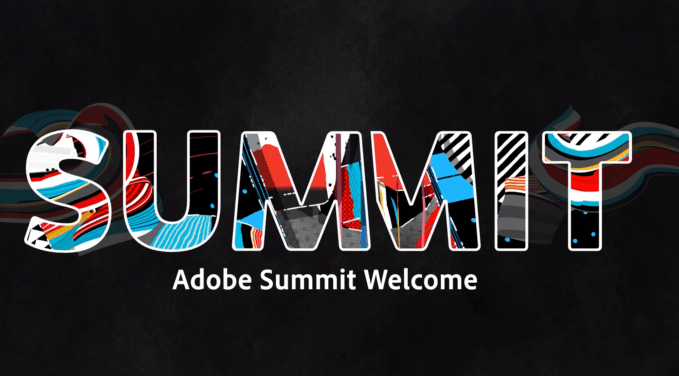
Online Summit welcome screen (Photo: Adobe)
There is still a lot of legal wrangling going on, from the dozens of contracts with hotels to arenas to production crews and sponsors and others that must be renegotiated as a result of pulling out of Las Vegas, but they are in the process of working those out and hope to roll some of those obligations into future years.
Just before the event actually happened, Amado said he had some anxiety that people would think recording in executives’ living rooms wasn’t up to Adobe’s normal production quality, but in the end the reaction was exactly the opposite.
“We’re so fortunate that we did it this way. In fact, we actually got a lot of kudos for not trying to fake it and set up green screens with everyone in virtual situations, but that we were just authentic. The way that everybody is working right now is the way that we executed Summit.”
